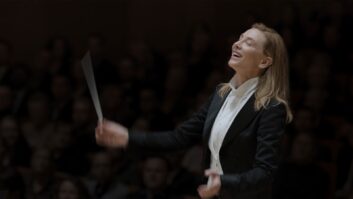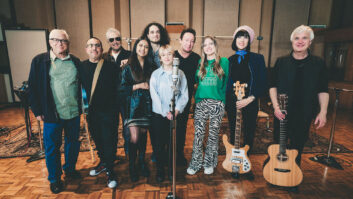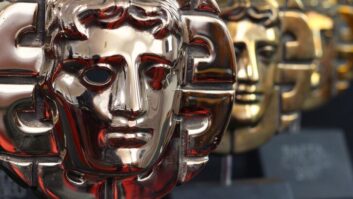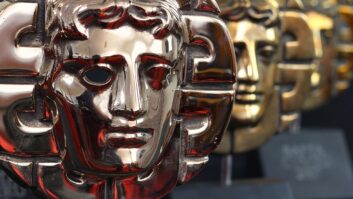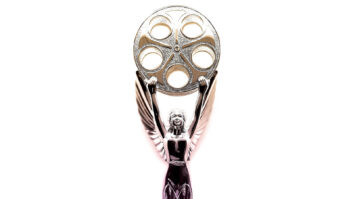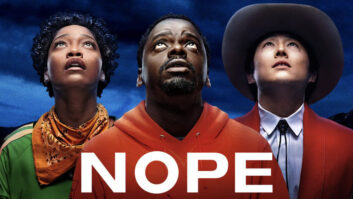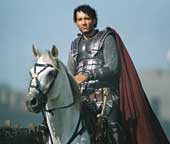
Photo: Courtesy Warner Bros.
The story of King Arthur, his brave Knights of the Round Table, the fair Guinevere and the magical sword Excalibur has been told in many films during the years, but it’s safe to say that there’s never been an interpretation quite like this summer’s King Arthur, directed by Antoine Fuqua, whose best-known film was the very modern and very violent Training Day. Fuqua’s take is high on realism and on the political machinations of fifth-century England and low on the mystical/magical aspects of the tale.
“Fuqua is a guy who really wants to tell a story through characters,” comments co-supervising sound editor Lon Bender of L.A.-based Soundelux. “Even though this story takes place in A.D. 425 and is in a sort of epic surrounding, it’s really been driven down to a more intimate place where the characters can really shine. A lot of the movie is very moody: The colors are blues and greens and black; there’s not a lot of yellow and white and bright colors. It’s dark for the Dark Age. Everything is very organic and that goes for the sound, too.”

Some of King Arthur’s sound crew at Future Post (London), from left: Colin Richie, Kevin O’Connell, Lon Bender, Eddy Joseph and Simon Chase
The word organic gets tossed around a lot by film sound people to imply natural as opposed to artificial sounds. I asked Bender what it implied in this case. “A lot of the [electronic] devices we would usually use to create motion have been eliminated. For instance, there’s a lot of fire in this movie and a huge sequence with catapults shooting these flaming tar-filled balls. Because we wanted it to sound organic, I honed in on fire material instead of anything that might make it sound modern or synthetic. We wanted everything to sound like it came from the Earth. So then it became a question of finding ways to use [the sound of] both small flames that had movement in them and large flames that could give weight to the impact of these flaming balls. We spent a lot of time burning things to get all the material we thought we’d need. There are all sorts of different fires, too, from small, intimate fires where people are sitting around outside or fires that are lighting up interiors and big fires that are rampaging.”
“Lon and co-supervisor Eddy Joseph have gone to great lengths to provide an authentic period feel for this film through the result of many hours of extensive field recordings, which has led to a cleaner overall mix,” says supervising sound mixer Kevin O’Connell.
Field recording sessions, using both 4-track Deva and stereo DAT, took place at various spots in the north of England. “A lot of the story takes place in the snow, so we spent a lot of time recording horses and carts on snow to get that sense of the ice — the way it sounds when heavy things hit it or slide on it or when the ice cracks,” Bender says. “These are very specific sounds we needed. On a Foley stage, you can put down corn starch or whatever and make it sound like snow, but to get something to sound like ice, you have to get the real thing.”
A few years ago, Bender won an Oscar for his work on Braveheart, but he notes, “Every time I do a movie, I treat it like it’s the first time I’m doing a movie. With this film, I really tried to clarify what the different weapons are like. There are bows and arrows and flaming bows and arrows. There are axes and swords and, of course, the Excalibur sword, which is very specific — it’s King Arthur’s sword!” he says with a laugh. “It ended up being a combo of a lot of interesting sword tones combined. It doesn’t necessarily just have the biggest, smashiest sound. It’s subtler than that.”
Bender says that much of the original weapons recording was done by Francis Lindsay, “who cut all the swords for [Yimou Zhang’s] Chinese epic, Hero. That has some really amazing sword material in it. He did a great job on this one, too. I was looking for consistency and to make the weapons sound interesting instead of just big.” While some period swords provided by museums and collectors were used — “We get a lot of help from military consultants,” Bender says — they also used what are known as “movie swords,” prized for their clanging metallic resonance. “You know what?” Bender says. “A lot of times, the real thing doesn’t sound as good as you want it to sound. It’s like, have you ever heard a real car crash? It sounds like a bunch of plastic being smashed. Reality is one thing, but this isn’t the movie where the exact sword for that moment is necessarily the sword you’re hearing.”
Typically, the sword hits have several sound components: “There’s the approach of the weapon to the target and then you’ve got the impact,” Bender says. “How deeply do you want the goriness of that impact to be? Is it a glancing blow or does it rip into the guy? And in the case of swords, there are a lot of different types of elements — how they release from the impact of another sword or a piece of wood or a body or whatever — and each of those has to be articulated. We spent months, literally, getting ready for the sword fights so we could get that kind of detail. When you put it all together, it almost works like music.” Bender worked closely with Oliver Tarney, who was also instrumental in the sound editing process.
When we spoke in early May, Bender was at Ardmore Studios outside of Dublin, Ireland, working on the temp dub on the studio’s Harrison MPC console. “Eight reels in eight days,” he notes. “Actually, it’s going very smoothly. A lot of it we premixed — I have 28 5-track premixes to work with.” The premix was to be scheduled for Future Post and the final mix at De Lane Lea. Both studios are in London and offer Neve DFC consoles.
Soundelux also set up facilities in London for this film and, previously, with Troy. Co-supervising sound editor Eddy Joseph worked on other aspects of the sound. “He and I are basically splitting up the creative process,” Bender says of Joseph. “He is looking after the background and Foley on the picture and dealing with the crew in London and I’m working in close detail on the sections that have to do with all the weapons and the fire material. We have quite a large operation set up there with 13 cutting rooms. It’s like a complete California-style operation.
“It’s interesting trying to re-create what the England of that time sounded like,” he continues. “We had lots of conversations about birds that do and don’t live here. You can’t have crickets at night — there are no crickets in England. You can have falcons but not hawks. We’ve been trying to create the world that represents that place and time, from the clothing to the weapons to the chill in the air.” He pauses and chuckles. “If you’re around in 425, make sure you’ve got some good, warm armor.”

